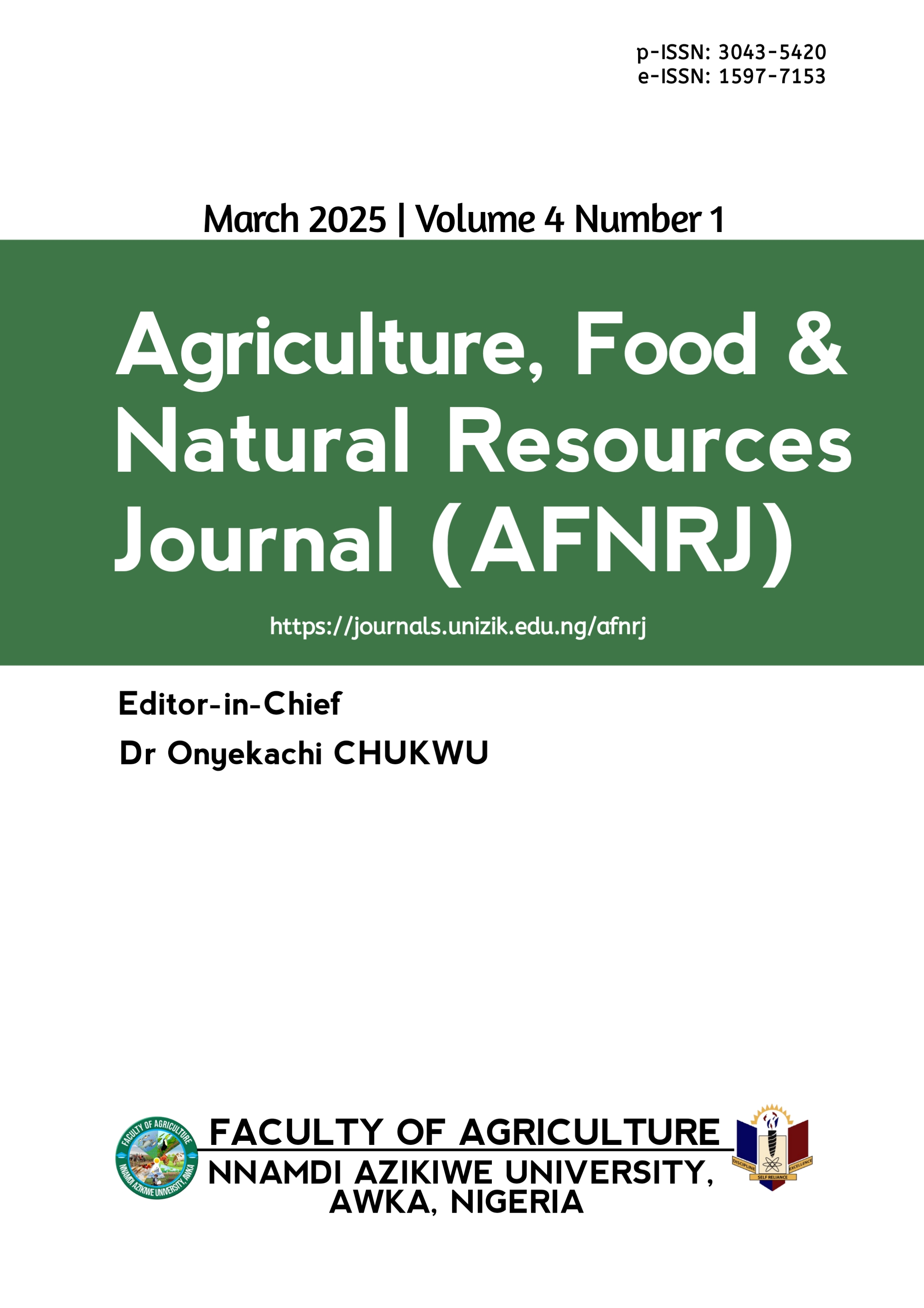Tree species composition and diversity across three forest reserves in Oyo State, Nigeria
DOI:
https://doi.org/10.5281/zenodo.15106967Keywords:
Abundance, Diversity, Exploitation, Regeneration potentials, Tree compositionAbstract
Forest reserves play a crucial role in biodiversity conservation and ecosystem stability, yet increasing exploitation threatens their ecological integrity. Tree species composition and diversity were assessed at Ijaye, Osho, and Onigambari forest reserves, Oyo State, Nigeria. A systematic sampling design was employed, and two lines transect, each 1000 m long and separated by 500m. Four temporary sample plots of 20×40m sizes were laid along each transect at 250m intervals. Diameter at breast height was measured from each of the trees in each plot; this was used to compute basal area, relative frequency, and relative dominance, and habitat occupancy was obtained and compared. Shannon-Weiner and species evenness indices were used to assess tree species diversity and abundance. The result shows that a total of 206 different tree species from six (6) families were encountered in Ijaye forest reserve, 177 trees from 12 families for Osho Forest reserve, while 189 trees from 17 families were encountered at Onigambari forest reserve. Shannon-Weiner values obtained were 1.95, 2.69, and 3.20 for Ijaye, Osho, and Onigambari forest reserves, while species evenness indices were 0.74, 0.91, and 0.88 for Ijaiye, Osho, and Onigambari forest reserves. Out of 36 tree species encountered in the three forest reserves, only 8 species had regeneration potential >1, which is regarded as low regeneration potential. The study concluded that exploitation has affected species diversity in the ecosystem and subsequently the roles of trees in environmental conservation are affected. Implementing silvicultural treatments is therefore recommended in order to improve species growth and facilitate natural regeneration.
Downloads
Published
Issue
Section
License

This work is licensed under a Creative Commons Attribution 4.0 International License.
which permits unrestricted use, distribution, and reproduction in any medium, provided the original author and source are credited.
Authors retain the copyright of their published work in the AFNRJ.





